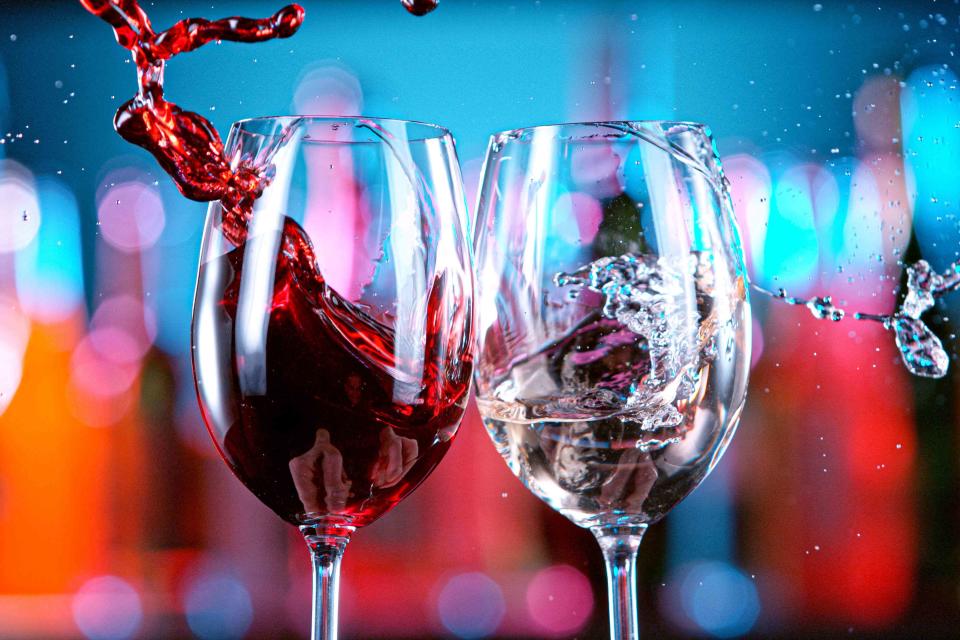Does This Dish Pair Better With Wine or Sake? Here's How to Tell
At the Food & Wine Classic in Aspen, learn about how wine and sake can enhance your next dinner.

Lukas Gojda / Shutterstock
To drink sake or to drink wine, that is the question. As sake sales have skyrocketed in recent years, more diners are faced with the question of what to drink to pair with their meal. Historically wine would have been the conventional answer, but more restaurants — both Japanese and global alike — are featuring sake bottles on their beverage menu. Much like anything to do with taste, though, the choice between pairing a dinner with wine or sake ultimately comes down to personal preference. But there are a few expert-approved tips to keep in mind when thinking about what to pair.
Sake and wine are often lumped into the same category given their relatively low-ABV (alcohol by volume) and how well each plays with food, but fundamentally wine and sake carry quite different flavor profiles. Understanding these key differences helps inform a top-notch food pairing. “The flavors and structure of wine are very different from sake,” says Food & Wine executive wine editor Ray Isle, “With wine, acidity comes into play, and for red wines, tannins.” Tannic, acid-forward red wines like those from Bordeaux or Tuscany pair well with fatty, salty foods like french fries or a big ribeye steak which can actually tone down the intensity of big reds.
Unlike wine, sake has very low acidity, if any at all. It can lean more subtle in flavor and often has an umami-driven character that pairs well with meaty flavors in food. “There’s a lot of science behind how the amino acids in sake react with those in food,” says sake sommelier Monica Samuels. Sake contains more amino acid chains than any other alcohol, and since amino acids make up proteins, it makes it a great fit for pairing with umami-rich food. “Sake can create this new dimension of flavor that’s more concentrated and umami-dense.”
While sake goes well with most rich, meaty dishes it can easily be overpowered by spicy foods. Most sake is entirely dry, meaning it has no sweetness, and is often slightly higher in alcohol and alcohol’s burn can be exacerbated by spice. If you’re looking for something to pair with a piquant Thai chicken curry, look toward a white wine with some residual sugar like a Halbtrocken or Feinherb Riesling from Germany.
For something with just a hint of spice, like tangy American barbecue, look towards a full-bodied sake like a fruity junmai ginjo. “Ketchup is beloved in every Japanese household and is one of the most umami-rich foods out there,” says Samuels. “When I think of barbecue sauce, those fermented, tangy flavors pair so well with sake.
When it comes to fish, especially caviar, both sake and wine can make for a wonderful pairing but they each bring something different to the table. Samuels hopes to debunk the classic caviar and Champagne pairing and prove that sake might be even better. “When you think about how caviar tastes, it can have a metallic note that can get heightened by Champagne’s acidity,” says Samuels. Salty, mineral-driven sake can help bring out the caviar’s oceanic nature in surprising and delicious ways: “It makes for a beautiful marine pairing that highlights the delicate briny flavor of caviar.”
While he’s staunchly team wine, and still loves caviar with Blanc de Blancs, Isle agrees: “In the classic ‘what grows together, goes together’ mentality, I definitely lean towards sake with simple raw fish preparations like sushi,” he says. “In the same way, I’d say sake doesn’t seem so right with a cheeseburger,” even though Isle admits, it might be a great pairing anyway. Sounds like a head-to-head sake and wine cheeseburger taste test is in his future.
For more Food & Wine news, make sure to sign up for our newsletter!
Read the original article on Food & Wine.

